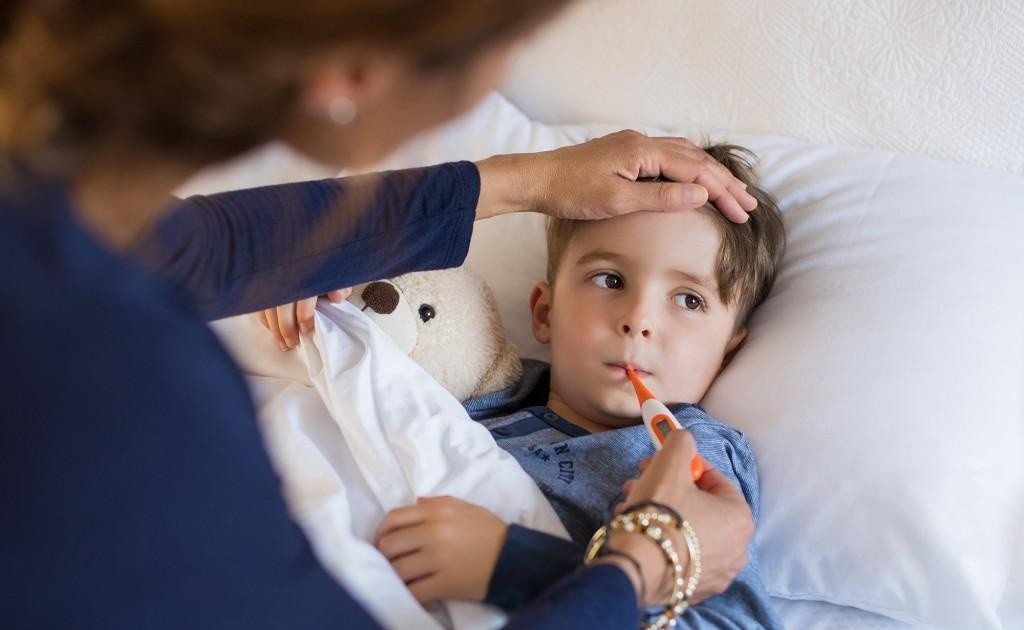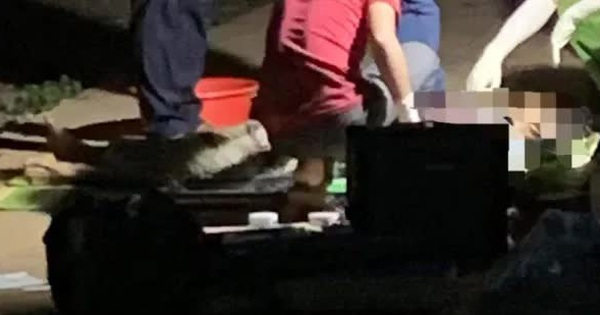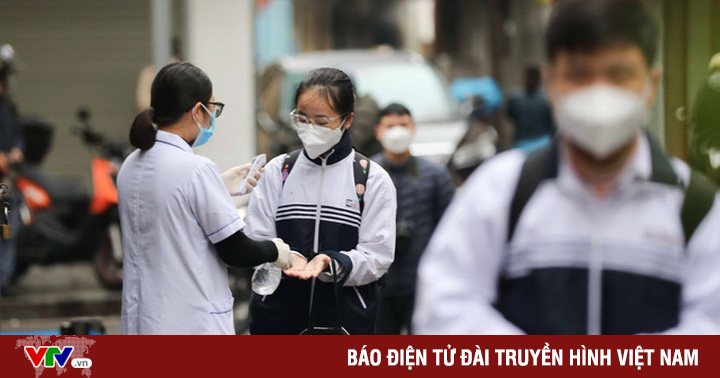Parents need to be careful when reducing fever for children with Covid-19
 |
| Many parents reduce fever for children with Covid-19 in ways that are indicated in folklore that can be dangerous for children. (Source: Shutterstock) |
Immerse the child’s body in cold water
Some parents think that when the child has a high fever, if you dip your child’s whole body or soak your feet or hands in a basin of cold water, it will help reduce the heat and heal faster. There are even cases where the baby’s hands and feet are soaked in ice water.
Pediatrician Ha Dinh Bong, a member of the team of doctors guiding the treatment of baby F0 at the analyst, when immersing the baby in cold water, the baby’s skin suddenly becomes cold, causing blood vessels under the skin to constrict, blood flow concentrates in the area. central and restricted to the subcutaneous capillary system. From there, the body cannot dissipate heat to the outside, which can cause the baby to have a higher fever. Soaking your baby in cold water for too long can also distort the body’s proteins, risking brain damage.
Let your baby soak in warm water
Contrary to cold water, some parents let their baby soak in warm water to reduce fever.
According to Dr. Bong, in some foreign hospitals like the US, doctors often have children soak in warm water to lower body temperature. However, these water pots must be temperature controlled, kept warm continuously, maintained at 2-3 degrees Celsius lower than the child’s body temperature (for example, a child with a fever of 39 degrees Celsius will be soaked in water). water maintained continuously at a temperature of 36-37 degrees Celsius).
When mothers perform this method themselves at home for their children, it is very difficult to ensure that the water basin is always maintained at a standard temperature. We cannot control the temperature, the water will cool very quickly.
“If the temperature is too low, it will cause heat disturbances inside the baby’s body as mentioned. And if the temperature is too high, for example, a child with a fever of 39 degrees Celsius is soaked in a basin of water of 39.5 degrees or 40 degrees, ie transferring more heat to the child, the child will have a higher fever. Soaking your baby in hot or cold water is not recommended,” said Dr. Bong.
Rub alcohol, alcohol on your child or wipe with lemon juice, vinegar
During the actual consultation, Dr. Bong saw that many mothers passed on the experience of rubbing alcohol or alcohol on their children’s armpits, groin, hands and feet to reduce fever. The doctor said, wiping the body with alcohol or alcohol can help cool down through the evaporation mechanism of alcohol. However, alcohol evaporates quickly and lowers the skin temperature quickly. As a result, the capillary system under the child’s skin will shrink, the body temperature will stay in the center (like immersing the child in cold water), eventually causing the child to have a higher fever.
Some other parents shared their experience that applying lemon juice and vinegar all over the baby’s body will help cool down. “Regarding the mechanism to help reduce fever, this method has not been clearly proven, but the health consequences are visible. Lemon and vinegar are both acidic, and children’s skin is sensitive and immature. When applying lemon and vinegar to the baby’s skin, it is very easy to cause skin damage and dermatitis,” said Dr. Bong.
Wear a lot of clothes, wrap blankets, turn on the heater because you see that the child is cold
Seeing that their children have malaria, parents often cover their children with many layers of blankets, dress them in warm clothes, and even turn on the heaters. According to Dr. Bong, the feeling of malaria is caused by a disorder in the body’s heat-regulating center. Your baby may feel cold, but the body is actually hot. Over-warming is similar to soaking your baby in hot water, which will cause the baby’s body temperature to continue to rise. The higher the temperature, the more dangerous the child’s health, the risk of convulsions.
The doctor gives advice, in case the child has a fever and feels cold to the touch, parents can warm the child’s head and head, not the whole body.
Taking paracetamol orally or rectally at the same time or less than 4 hours apart
Doctor Ha Dinh Bong informed that paracetamol is an active ingredient that has antipyretic effects. Currently, on the market, there are many products made from this active ingredient, but with different names and different finished products such as Hapacol (tablet form), Efferalgan (anal form), antipyretic drugs in syrup form. to drink,…
When buying fever-reducing medicine, many mothers do not know that the ingredients of these drugs are all paracetamol, so they should give them to their children at the same time. “There are parents who see that their child has been taking fever-reducing tablets for 1 or 2 hours and then they don’t get better, so they continue to take another form of medicine, for example Efferalgan to put the anus. However, oral and anal use are both in the child’s body, and anal placement is equivalent to a single pill. The essence of these two drugs is the same active ingredient, paracetamol,” emphasized the doctor.
The manufacturer and the Ministry of Health recommend that only repeat paracetamol after 4-6 hours, no more than 4 times a day. Thus, when using 2 antipyretic drugs too close will cause an increase in dose, overdose; risk of increased liver enzymes, hepatitis, poisoning.
How to properly treat a child’s fever?
According to doctor Ha Dinh Bong, when a child has a mild fever, from 37.5 degrees Celsius to 38.5 degrees Celsius (or 38 degrees Celsius if the child has had a seizure), parents should take the following 4 steps.
1, Place the child in a well-ventilated room.
2, Loosen clothes, open diapers (even if the child feels cold, absolutely do not cover many blankets, do not wear many clothes, do not turn on the heater).
3, Warm the child: Use a clean towel dipped in a basin of warm water from 32-35 degrees Celsius, squeeze out excess water and wipe the baby’s body; focus on wiping the neck, armpits, groin… Absolutely do not wipe with lemon juice, alcohol, alcohol. Do not immerse the child’s hands, feet or whole body directly into the basin of water.
4, Preventing water-electrolyte disorders for babies: Children under 6 months need to increase the number of times of breast-feeding (or expressing milk, after every 15 minutes, children can eat a few spoonfuls); Older children can drink Oresol solution, take it a little bit and drink it many times.
In case the child has a high fever over 38.5 degrees Celsius (or over 38 degrees if ever having a seizure), it is necessary to use fever-reducing medicine immediately, combining 4 steps as above.
At the new guidance on home management for people with Covid-19 issued on March 4, the Ministry of Health said that when a child with Covid-19 has a fever, parents can give the child a 10-dose paracetamol dose. 15 mg/kg/time (oral or rectal), at least 4-6 hours if repeated. Note, the total dose should not exceed 60mg/kg/day.
Or use dose according to age if the child’s weight is not known, specifically as follows: children under 1 year old take paracetamol 80mg, the oral dose is 1 pack x 4 times/day; Children from 1 to under 2 years old take paracetamol 150mg, dose 1 pack x 4 times/day; Children from 2 to under 5 years old take paracetamol 250mg, oral dose of 1 pack x 4 times/day; children from 5 to 12 years old take paracetamol 325mg, oral dose of 1 tablet x 4 times/day; Children over 12 years old take paracetamol 500mg, the dose is 1 tablet x 4 times/day.
The Ministry of Health emphasized, guiding the dose of paracetamol for children by age is only used when the weight of the child is unknown, the optimal dose is still calculated by weight.
at Blogtuan.info – Source: baoquocte.vn – Read the original article here



